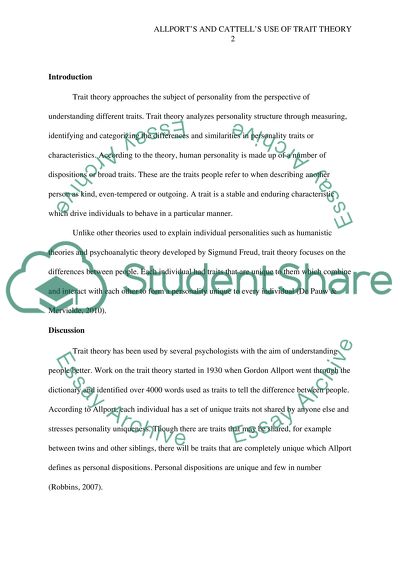Allports and Cattells use and theory Essay Example | Topics and Well Written Essays - 500 words. Retrieved from https://studentshare.org/psychology/1596102-allports-and-cattells-use-and-theory
Allports and Cattells Use and Theory Essay Example | Topics and Well Written Essays - 500 Words. https://studentshare.org/psychology/1596102-allports-and-cattells-use-and-theory.


